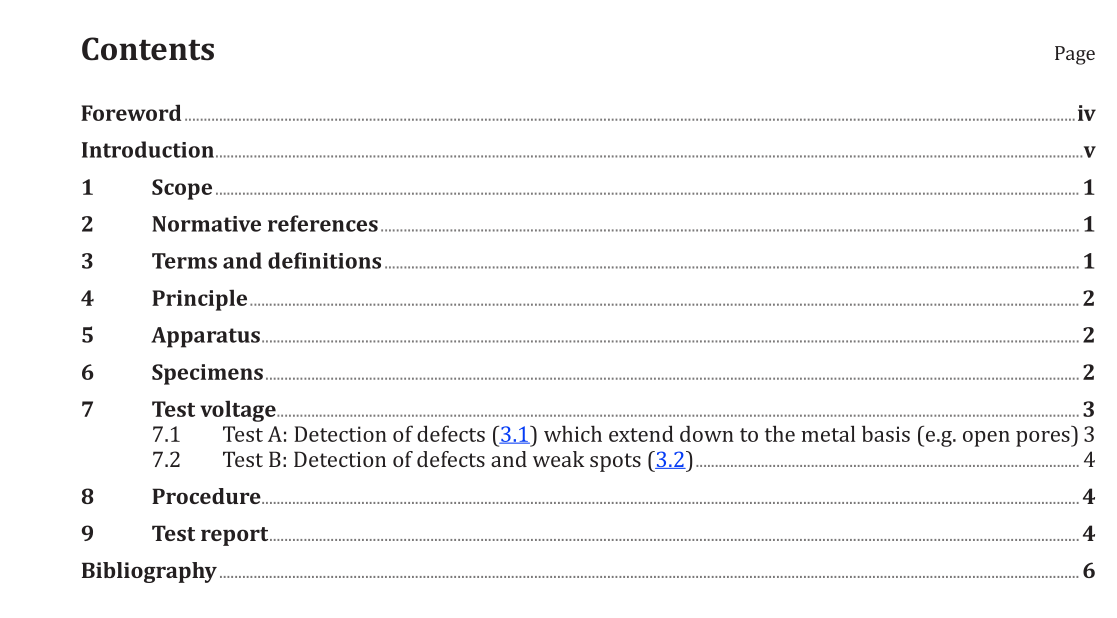ISO 2746:2015 pdf download.Vitreous and porcelain enamels — High voltage test
1 Scope
This International Standard describes two test methods of high voltage testing:
— Test A is used to detect and locate defects in vitreous and porcelain enamels;
— Test B is used to detect and locate defects and weak spots in vitreous and porcelain enamels.
The tests are performed using DC or pulsed DC high voltage.
The tests are applicable to dry surfaces of enamel coatings. In the case of moist surfaces, care should be taken to ensure that the locating of any defects is correctly performed.
Since test voltages depend on the coating thickness, the test method, especially with test A, may not be suitable for test specimens for which the coating thickness varies to a large extent.
2 Normative references
The following documents, in whole or in part, are normatively referenced in this document and are indispensable for its application. For dated references, only the edition cited applies. For undated references, the latest edition of the referenced document (including any amendments) applies.
ISO 2178, Non-magnetic coatings on magnetic substrates — Measurement of coating thickness —Magnetic method
ISO 2360, Non-conductive coatings on non-magnetic electrically conductive basis materials — Measurement of coating thickness — Amplitude-sensitive eddy-current method
IEC/TS 60479-1, Effects of current on human beings and livestock — Part 1: General aspects
IEC/TS 60479-2, Effects of current on human beings and livestock — Part 2: Special aspects
3 Terms and definitions
For the purposes of this document, the following terms and definitions apply.
3.1 defect
area of an enamel layer where an open path connects the enamel surface with the metal basis
Note 1 to entry: Examples of defects are cracks or pores.
5 Apparatus
5.1 High voltage generator.
5.1.1 Direct-current (DC)-voltage generator, conforming to the requirements of IEC/TS 60479-1,able to deliver a DC-voltage corresponding to the testing voltage, adjustable and measurable at the test probe with limiting deviation +5 %/-10 %. The total internal resistance shall be high enough to give the short circuit current of the generator an arithmetical mean from 2 mA to 3 mA maximum. The peak value of the current during a spark discharge shall be between 10 mA and 50 mA and the amount of charge per impulse shall be 25 μC maximum.
The negative pole of the generator shall be earthed (USA: grounded) and the positive pole shall be connected to the test electrode by a screened high voltage cable of suitable length.
5.1.2 Pulsed DC-voltage generator, conforming to the requirements of IEC/TS 60479-2 able to deliver a DC-voltage corresponding to the testing voltage. The voltage shall be adjustable and measurable at the test probe with limiting deviations +20 %/-10 % for test voltage greater than 10 kV and limiting deviations +40 %/-10 % for test voltages less than 10 kV.
5.2 Test electrode, made out of metal wire or conductive rubber that is unaffected by a spark discharge.
NOTE Alternative test electrodes can be used providing they are unaffected by a spark discharge.
ISO 2746:2015 pdf download
